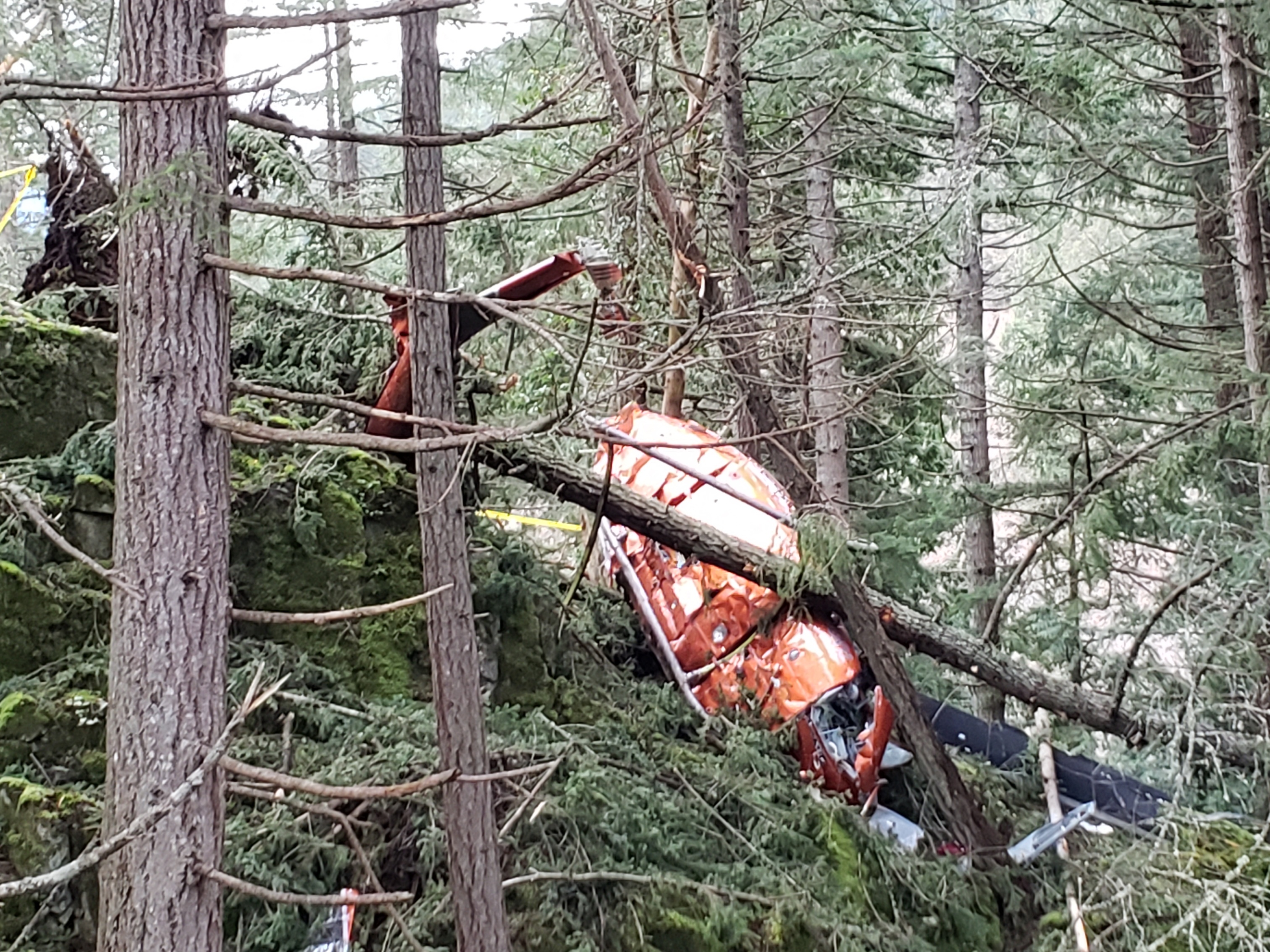Loss of control and collision with terrain
Airspan Helicopters Ltd.
Bell 212, C-GNYI
Bowen Island, British Columbia
The occurrence
On 05 March 2021, the Airspan Helicopters Ltd. Bell 212 helicopter (registration C-GNYI, serial number 30569) with 2 pilots on board was travelling from Sechelt Aerodrome (CAP3), British Columbia, to Cypress Provincial Park, located in West Vancouver, British Columbia, to support a BC Hydro project.
At 0946 Pacific Standard Time, while in the cruise portion of the flight, the helicopter entered wind shear and experienced a sudden, dramatic right roll with nose-down pitch. After regaining control, the number 2 engine experienced an uncommanded in-flight shutdown and the flight controls became very hard to manipulate.
A location on nearby Bowen Island, British Columbia, was selected for an emergency landing; however, the helicopter was still difficult to control and the pilots were unable to manoeuvre it to the desired location. During the descent, the helicopter began a rapid rotation to the right, which the pilots were unable to arrest. After several rotations, the helicopter collided with trees and came to rest on a rocky ridge approximately 270 feet above sea level on the northwest corner of Bowen Island.
Both occupants received serious injuries. The helicopter was substantially damaged, but there was no post-impact fire. The emergency locator transmitter activated and a signal was received by the Canadian Mission Control Centre, in Trenton, Ontario.
Media materials
News release
Severe turbulence led to helicopter collision with terrain on Bowen Island, British Columbia
Read the news release
Deployment notice
TSB deploying investigators to a helicopter accident on Bowen Island, British Columbia
Richmond, British Columbia, 5 March 2021 — The Transportation Safety Board of Canada (TSB) will deploy a team of investigators on Saturday to the site of a Bell 212 helicopter accident on Bowen Island, British Columbia. The TSB will gather information and assess the occurrence.
Investigation information
Download high-resolution photos from the TSB Flickr page.
Class of investigation
This is a class 3 investigation. These investigations analyze a small number of safety issues, and may result in recommendations. Class 3 investigations are generally completed within 450 days. For more information, see the Policy on Occurrence Classification.
TSB investigation process
There are 3 phases to a TSB investigation
- Field phase: a team of investigators examines the occurrence site and wreckage, interviews witnesses and collects pertinent information.
- Examination and analysis phase: the TSB reviews pertinent records, tests components of the wreckage in the lab, determines the sequence of events and identifies safety deficiencies. When safety deficiencies are suspected or confirmed, the TSB advises the appropriate authority without waiting until publication of the final report.
- Report phase: a confidential draft report is approved by the Board and sent to persons and corporations who are directly concerned by the report. They then have the opportunity to dispute or correct information they believe to be incorrect. The Board considers all representations before approving the final report, which is subsequently released to the public.
For more information, see our Investigation process page.
The TSB is an independent agency that investigates air, marine, pipeline, and rail transportation occurrences. Its sole aim is the advancement of transportation safety. It is not the function of the Board to assign fault or determine civil or criminal liability.
